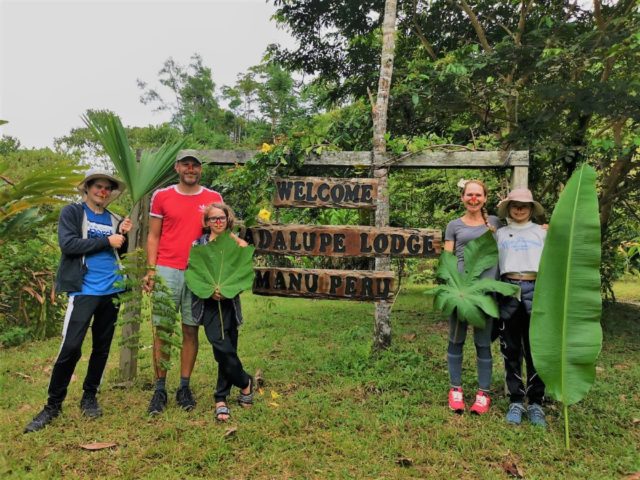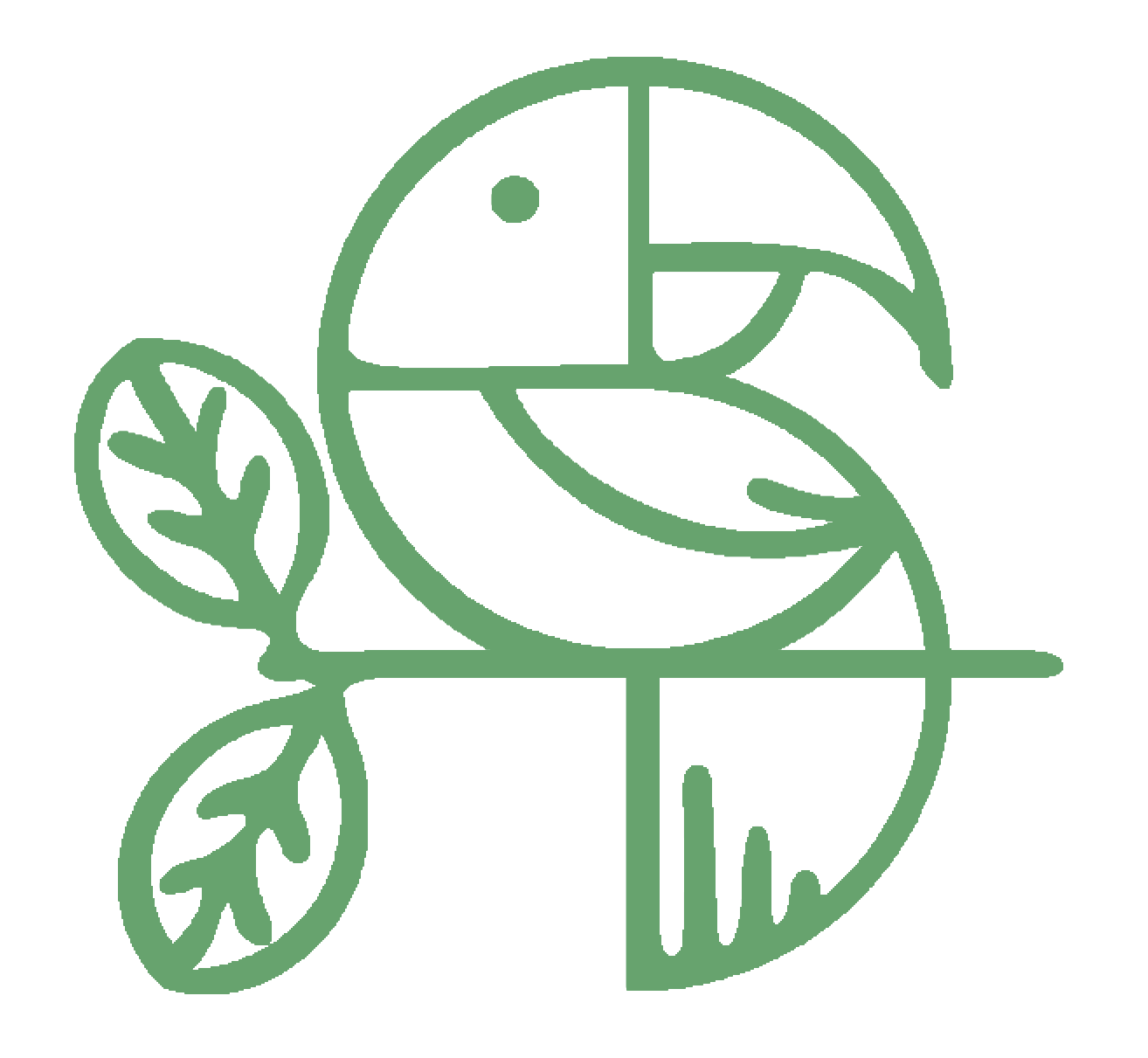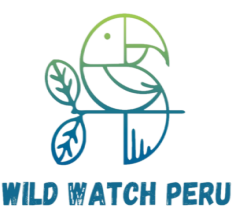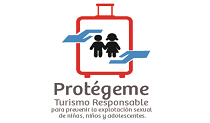FIND THE RIGHT ANSWERFrequently Asked Questions
Search for a tour
Travel Documents
Payments Methods
Weather Conditions
How to register for this tour.
Please first contact Wild Watch Peru, by email or phone to check on availability via our contact form. You can also do it manually (send this info by email) at the following email: 07@wildwatchperu.com
• Full Names……………………..
• Nationality & Passport Number ……….
• Age ………………
• Profession ……………………………..
• Dietary and medical restrictions…………………………………………………
• Arrival date and hotel in Cusco………..
Credit Card
We accept major credit cards, Visa, Master Card, and others, this can be paid online or POS (upon your arrival) after you fill out the booking form we will send you a payment link (the initial amount depending on the type of tours, Birding, and Tours into the Reserved Zone requires a higher amount).
Down Payment in Peruvian Bank
Bank Name : Banco Internacional del Perú
Holder name in USD: Wild WATCH PERU E.I.R.L
CCI: 003-420-003003704309-75
Swift Code: BINPPEPL
Address : APV VIRGEN DEL CARMEN 206 SAN SEBASTIAN – CUSCO
Pay Pal System
We also accept deposit payments via on secure online payment system by sending your down payment to the given link https://www.paypal.me/wildwatchperutours
Cash
We also accept last-minute bookings and payments in cash, American Dollars, and Peruvian soles are accepted. The payment can be arranged upon your arrival in Cusco or once the tour begins. (morning of departure) * Discounts are given for paying in cash at our office in Cusco.
Important FAQS Peru Jungle Tours
Payments should be completed via our existing payment gateways with a minimum of 2 days before the trip begins. Otherwise, your spaces will be released.
Cancellation Policy:
Cancellation by a tour participant minor or equal to 7 days prior to the departure date will result in a NOT refund of the Booking Deposit (100 USD) from Wild Watch Peru. However, this deposit can be transferable for any other trip or the same trip requested on a different date of departure during the season, this should be requested by email to info@wildwatchperu.com a minimum of 7 days before the original departure date.
Deposit policy:
At the time of booking a tour, a USD 100 deposit per person is required to secure a space on our Tours. This deposit is refundable or transferable up until 7 days prior to the departure date of the tour. The deposit must be received at the time of booking or the reserved space will be released in the next few days because of a lack of initial deposit. Up to 7 day prior to the departure date, a deposit may be transferred to another Wild Watch Peru tour without penalty.
- Wild Watch Peru, acts as a tour operator in the following destinations, Manu National Park, Espiritu Pampa, Vilcabamba, Huacarpay Lake, Sacred Valley, and Machupicchu, however, however acts as an agent for the passenger in regard to travel, whether by airplane, bus, train, or boat, and assumes no liability for injury, damage, loss, accident, delay, or irregularity that may be occasioned either by reason of defect in any vehicle or for any reason whatsoever or through the acts or default of any company or person engaged in conveying the passenger or in carrying out the arrangements of the tour.
- Wild Watch Peru can accept no responsibility for losses or additional expenses due to delays or changes in air or other services, sickness, pandemic, weather, strike, war, quarantine, or other causes. All such losses or expenses will have to be borne by the passenger, as tour rates provide for arrangements only for the time stated.
- The right is reserved to substitute Lodges of a similar category for those indicated and to make any changes in the itinerary where deemed necessary or caused by room occupancy, pandemia regulations, or climatological conditions (river or road conditions). The right is reserved to cancel any tour prior to departure, in which case a full refund will constitute a full settlement to the passenger. The right is reserved for substitute leaders on any tour. Where this is necessary, notification will be given to tour members.
- No refund will be made for any unused portion of the tour unless arrangements are made in sufficient time to avoid penalties.
- The prices of the tours are based on tariffs and exchange rates in effect January 2025 and are subject to adjustment in the event of any change therein. The right is reserved to decline to accept or to retain any person as a member of any tour. Baggage is at the owner’s risk entirely. Prior to acceptance on any tour, the participant must read and sign a liability waiver included in the registration form.
Tour Inclusions FAQS Peru Jungle Tours
The cost of the tour includes all accommodations, food, within-tour transportation, baggage handling (when needed), entrance fees, purified water during the day’s tour activities, and guide services, as indicated by the itinerary. In general, the hotels and lodges we use on the tours are nice and comfortable, and often the best available in the more remote areas we visit. Meals are typically taken in the lodges
Tour Exclusions FAQS Peru Jungle Tours
The following items are not included in the tour price:
Travel to and from the location where the tour begins and ends, laundry, alcoholic beverages, phone calls, and other items of a personal nature, single Supplement = $ 30 per night.
Best time of the year to travel? FAQS Peru Jungle Tours
The best is during the dry season from May to December however the Manu Road is already paved so delays due to road conditions are not expected
How much is the elevation range along the road trip?
Acjanaco Pass is above 3400 m / Ninamarca pre-Inca ruins (just above Paucartambo) 3900 meters are the highest locations still in the Andes, and the descent will be as low as 600 Meters (Guadalupe Lodge ) the road goes in a zig-zag while driving at the other side of the Andes. The Manu Road is under construction and paved on 2023
How much is the elevation range along the road trip?
Not too far the distance from Cusco city to the Manu tropical area is around 210 km where most of the Manu rainforest lodges are settled as well as towns, and villages at this transect all the lodges are still outside of the Reserved Zone.
Want to lie in a hammock and not move until cocktail hour? We’ve got a trip for that. Want to power up the side of the mountain at a high altitude? We’ve also got a trip for that. To determine what type of trip suits you best, each of our trips comes with a Physical Rating to let you know how physically demanding it is… or isn’t. Find out more about ratings.
What safety measurements do you have?
Concerning the backup facilities, all our overnight places have internet WIFI and cellphone coverage in some villages along with the Manu road and near Boca Manu village. mini-hospital is available in Villa Salvacion and the remoteness of Boca Manu (medical post)
Typically December to April is the peak of the rainy season. During the Pandemic times, the Manu road has been under construction and is currently paved from Cusco all the way down to Atalaya Port and it goes beyond Salvation Village in Madre de de Dios Department
The road shape in the cloud forest is dependent on much of the weather conditions at the range of 3400 meters to 1400 meters between this transect the road passes by hilly mountains, currently there are only very few spots considered vulnerable to landslides that the local drivers take care and drives prudently to go across, we must mention that some years the wet season appears to be normal, no bad news about the Manu access most of the time.
Mosquitos (Malaria, Leishmania, Botflies, dengue)
Prevention is the keyword, always wear long-sleeved shirts and long trousers, Use insect repellent if mosquitoes are seen or heard (or always ), and sleep under the mosquito net provided. repellent on a shirt and trousers is good advice, Be aware of long-term effects even months later.
What about the Malaria treatment?
Though it only is a small risk, it is possible you get infected with malaria in Manu, and we recommend you take prophylaxis when going on one of our tours.
The yellow fever situation is about the same. Moreover, yellow fever is almost always lethal therefore it is required that one receives the yellow fever vaccination at least ten days before entering Manu.
In the Water
it mostly sounds like a possible activity while staying outside of the Manu Reserved Zone, Safe if your guide says so, Small Caymans are not likely to attack (a single case of Black Caimans has been reported within Manu over the years) Piranhas are not a problem, don’t pee in the water while swimming, though, You seldom attract the small candiru fish and they might mistake your body openings for the gill openings of a big catfish.
Always make your guides swim first to prove that it is really safe.
Anacondas
The 1997 movie ¨Anaconda¨ was a blessing for the rainforest, it scared people, and it is people who threaten nature, the funny thing about this movie is that it gives people what they already know or what they already think they know, all preconceptions show up, obviously the filmmakers did not care about facts of the real world.
What is the best way to carry money?
A variety of sources is only possible while staying in large cities such as Cusco however it is recommended to get some Peruvian Soles before leaving the city, there are no existing cash machines along the Manu National Park or the time you head into the Jungle so preferably takes some small bills for paying additional services(public toilets, souvenirs, cold drinks)
Scary if seen, but snakes are rare and there are about six fatal species in the region, Coral snakes are not likely to attack, especially not because their fangs are not big enough for it (between your toes is the most likely place, so don’t walk on sandals along the trails ) Bushmasters might be aggressive, they are territorial and nocturnal and will strike for the heat, just above boots, don’t lower your bumps in the bushes without checking them.
Radio–collared bushmasters have been reported to sleep within half a meter of a trail where tourists walk by without noticing the snake, so don’t walk off the trails without guidance.
Fer de lance snakes are more often seen, they love to check clearings and under buildings for rodents and amphibians, they are aggressive and easily attack if disturbed. Be aware, especially when walking around the buildings at night, always bring your flashlights, if you are bitten, it is not likely the snake has injected all its venom, that would be silly because it might take 2 weeks for the snake to produce a new supply of venom and humans are not their prey, try to relax, don’t panic, don’t try to suck the venom out by yourself, don’t cut into the flesh, these practices do not help much, you will be assisted by our guides that carries anti-venom as soon as possible or being evacuated to the local hospitals, in general, keep your distance from snakes.
Forest pigs are shortsighted and that is why they might be dangerous, if you hear, smell, or see them, leave them alone and don’t talk much until they go away.
They are very rare and avoid noisy tourists, you are lucky if you see one, don’t run away because that may provoke an attack, Just observe, or if you are scared, scream loudly, move your arms, and slowly move back, The Jaguars will look at you in surprise, raise his shoulders, decide that you are crazy and slowly walk away.
Not a big deal, fatal spiders live in deserts, and tarantulas rarely attack, and if so, are not fatal, their hairs might cause an allergic reaction.
Does Wild Watch Peru have family trips?
Wild Watch Peru offers a wide range of Family Adventures. The minimum age (for Family trips) varies depending on the destination, and WWP has set minimum ages (+5) to ensure that the included activities suit each age range. Check out our blog about traveling in Manu with Children

How many people will be on my trip?
Good things come in small packages, which is why we keep our group sizes down. This means we’re small enough to remain flexible as we thread our way through nature without scaring wildlife away. On most of our trips, you’ll be part of an intimate group of 2 – 6 people, though our group sizes are on average 8 people. Our Overland trips are in purpose-built vehicles that can carry up to 8 travelers. Group sizes are displayed on each trip’s overview page on our website.
Are there age restrictions on your trips?
For the majority of our trips, the minimum age is 15. An adult must accompany all children under the age of 18. Younger children can join us on our Family trips and Short Break Adventures, but check each trip for its minimum age, which is located on the trip’s overview page on the website. Most of our trips don’t have a maximum age limit, but a Self-Assessment Form is required for all passengers 70 years and over.
I have special dietary requirements – will they be catered for?
We will try our very hardest to accommodate all dietary requirements. Please let us know at the time of booking of any food requirements or allergies and we’ll pass the information on to your Tour leader and Chefs.
Our food is not typical Peruvian food, nor typical tourist food. It is food that lasts in the heat and humidity of the tropical rainforest. For breakfast, there are omelets, scrambled eggs, pancakes, etc. The lunches in general consist of cold salads since it is usually hot at that time of the day. The dinners feature soups (great Peruvian soups), the main course with meat for the first part of the tour, and beans or lentils at the end part (since meat cannot be kept cool forever without electricity), and desserts of fresh fruits or puddings, etc. You can also ask for a special diet, such as vegetarian, salt, or anything else that you need or prefer.
Just for the first day, you should bring your own water. For the rest of the trip, we provide mineral water that we bring in from Cusco. FAQS Peru Jungle Tours
Can I drink the water at the Destination I visit?
In some destinations, it may not be wise to drink the local water. For drinking, we have mineral water as much as you need, plus lemonades, coffee, tea, chocolate, and herbal teas. There are places where one can buy beers or soft drinks, but you have to pay for them yourself.
We have a 4-wheel drive Toyota Fortuner SUV for couples or small groups of 4 people, these vehicles have been adapted for the unpaved Manu road.
For groups larger than 4 passengers we provide Toyota or Mercedes Benz minivans, they are also adapted for difficult roads.
How long is the Travel time to Manu Park?
Actually, the Travel times vary depending on the type of transport you hire from pick-up minivans or buses (you should also consider the number of stops you make along the tour as the travel route will take you to fascinating archeological sites and colonial-style villages ) but you can easily reach the official boundaries of the Manu Park in 7 hours at regular speed 35 km per hour
Are you guaranteed to see birds at the Macaw Licks?
The dry season is a good season to see the birds. The most likely reason for them to come and eat the clay is because at certain times of the year, there are hardly any fruits available for them, just seeds. Seeds in general have a toxic layer, exactly to prevent animals from eating them. If the macaws eat them anyway, they have a buildup of poison in their stomach. To neutralize the acids that the poison produces in their stomachs, they eat the clay. In the rainy season up until the beginning of the dry season (May), there are many fruits. So the macaws eat fewer seeds and more non-toxic fruits and feel less necessity to eat the clay. Usually, it means there are fewer macaws present at the beginning of the dry season. In the middle of the dry season, there may be about 100 to 150 macaws visiting the clay lick in one morning, whereas there may only be 10 to 50 at the end of the rainy season/beginning of the dry sea season. ** Not available from November to April.
What are the temperatures like in Manu?
The first night you spend in the cloud forest, at 1600 m., where temperatures are about 10 degrees Celsius (50F). In Manu’s lowland forest, the temperature at night is normally around 24 degrees Celsius (75F) and during the day about 30 degrees Celsius (86F). However, cold winds from Patagonia may reach Manu and the temperature may lower to about 10 degrees Celsius (50F). These “friajes” are more common during the southern hemisphere’s wintertime (between April and the end of August)
I’m traveling alone – is that OK?
This is the beauty of the Wild Watch Peru style of travel: many of our travelers join because they are traveling solo and want to meet and share experiences with like-minded people. Find out more
If I am traveling solo, will I be charged a single supplement?
As a solo traveler, you will be paired up with another passenger of the same gender as per your passport information. If you’re not comfortable sharing a room with someone of the same gender, you also have the choice to pay for a single supplement (available on the majority of our trips).
If you don’t identify with the gender assigned on your passport, please let us know at the time of booking and we’ll arrange the rooming configuration accordingly.
Can we book a triple room?
Depending on the trip style you choose, our trips are organized on a twin double bed basis, individual room requests can’t be guaranteed at the last minute
Can I book a single room?
You can book pre and post-accommodation on a single basis; however, throughout your Wild Watch Peru Trip, rooming is organized on a twin-share basis. Some trips do have a single supplement available – check a trip’s overview page on our website, or their Trip Notes, to see whether a single supplement is offered. If so, please request this at the time of booking.
Do I need to bring a sleeping bag?
We only have a handful of itineraries where sleeping bags are required and these are generally trips that involve camping. When we use Lodgs, blankets are provided but some travelers feel more comfortable with their own sleeping bag or sleep sheet. This decision is a personal preference. Refer to your Trip Notes if you are unsure whether a sleeping bag is required.
Do we need to bring our own mosquito nets?
No, you do not have to bring your own mosquito nets; wherever they are needed, we will provide them.
Guadalupe Lodge.
The tour will be staying at this very nice and exclusive lodge if traveling for 3 and 4-day tours, this lodge is located on the lush foothill forest over 640 m / 1, 902 ft in elevation.
The lodge looks out over the magical palm forest with colorful blue and yellow macaws flying over and thousands of oropendolas.
The area around the lodge is populated by bamboo forest, the lodge offers private toilets and showers with hot water, lights, and electricity from 6:00 PM to 10:00 PM powered by solar panels and free Wi-Fi. The lodgefront has a nice view of the garden and the Guadalupe River.
Casa Matsiguenka.
What we like about this Lodge is the beautiful environment and simple and lovely rooms setting with peace and quiet in a remote setting like the other camps inside Manu National Park, very well situated near the Manu River. Each bungalow has two beds with mosquito netting, bathroom facilities are shared in a separate building, electricity is provided by solar panels, and meals will be taken in a separate building with a kitchen and small dining room. As the lodge is set right in the rainforest on the bank of the Manu River, the wildlife spotting is really good. The Matsiguenka Native People running this lodge make it different from the other lodge management, the lodge is used during extended trips into the Manu reserved Zone for up to 6 days program.
The cook and his helper do the cooking and dishes. In principle, the boatmen and the guide will carry your luggage to and from the boat to your accommodation. Often people like to assist them, preferring to carry their own bag – which is gratefully accepted but no obligation at all.



